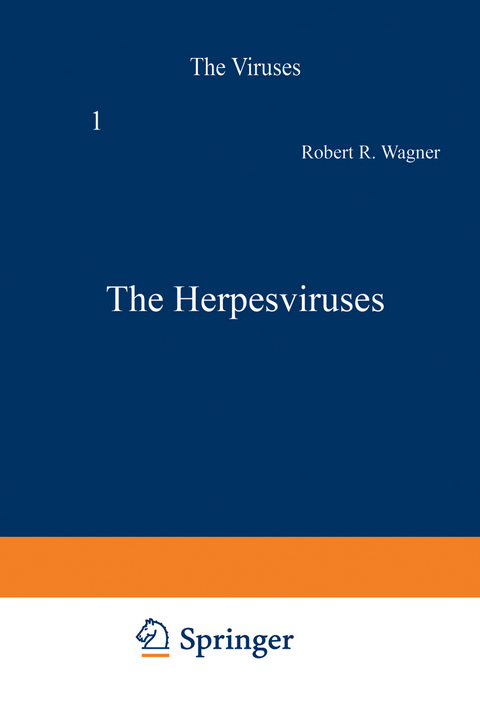
The Herpesviruses
Springer-Verlag New York Inc.
978-1-4684-4165-9 (ISBN)
The first volume of the nineteen-volume series entitled Comprehensive Virology was published in 1974 and the last is yet to appear. We noted in 1974 that virology as a discipline had passed through its descriptive and phenomenological phases and was joining the molecular biology rev olution. The volumes published to date were meant to serve as an in depth analysis and standard reference of the evolving field of virology. We felt that viruses as biological entities had to be considered in the context of the broader fields of molecular and cellular biology. In fact, we felt then, and feel even more strongly now, that viruses, being simpler biological models, could serve as valuable probes for investigating the biology of the far more complex host cell. During the decade-long compilation of a series of books like Com prehensive Virology, some of the coverage will obviously not remain up to-date. The usual remedy to this aspect of science publishing is to pro duce a second edition. However, in view of the enormous increase in knowledge about viruses, we felt that a new approach was needed in covering virology in the 1980s and 1990s. Thus we decided to abandon the somewhat arbitrary subgrouping of the subject matter under the titles Reproduction, Structure and Assembly, Regulation and Genetics, Addi tional Topics, and Virus-Host Interactions. Instead we have organized a new series entitled The Viruses.
1 The Family Herpesviridae: General Description, Taxonomy, and Classification.- I. Description of the Family.- II. Naming of Herpesviruses.- III. Classification of Herpesviruses.- References.- 2 Epidemiology of Epstein—Barr Virus and Associated Diseases in Man.- I. Province of Epidemiology.- II. Natural History of Epstein-Barr Virus.- III. Disease Associated with Primary Infection by Epstein-Barr Virus: Infectious Mononucleosis.- IV. Role of Epstein-Barr Virus in the Pathogenesis of Burkitt Lymphoma.- VI. Summary and Conclusions.- References.- 3 Biochemistry of Epstein—Barr Virus.- I. Introduction.- II. Structural Components of the Virus.- III. Transformation and Latency within B Lymphocytes.- IV. Abortive and Productive Infection.- V. Summary.- References.- 4 Biology of Lymphoid Cells Transformed by Epstein—Barr Virus.- I. Establishment of Lymphoblastoid-Cell Lines from Patients.- II. Establishment of Lymphoblastoid-Cell Lines by in Vitro Transformation.- III. Surface of Epstein-Barr-Virus-Transformed Cells.- IV. Immunoglobulin Synthesis by Epstein-Barr-Virus Transformed Cells.- V. Morphology and Growth Characteristics.- VI. Epstein-Barr Viral Genome Expression in Transformed Cells.- References.- 5 Immunology of Epstein—Barr Virus.- I. Introduction.- II. Epstein-Barr-Virus-Specific Antigens.- III. Epstein-Barr-Virus-Specific Immune Responses.- IV. Concluding Remarks.- References.- 6 Herpesvirus saimiri and Herpesvirus ateles.- I. Introduction.- II. Natural History of Oncogenic Herpesviruses from New World Primates.- III. Structure, Composition, and Replication of Virus Particles.- IV. Classification of Oncogenic Primate Herpesviruses.- V. Pathology of Neoplastic Diseases caused by Herpesvirus saimiri and Herpesvirus ateles.- VI. Mechanisms of Pathogenesis inOncogenic Transformation and Tumor Induction.- VII. Concluding Remarks.- References.- 7 The Molecular Biology of Marek’s Disease Herpesvirus.- I. Introduction.- II. Marek’s Disease Virus Deoxyribonucleic Acid.- III. Proteins.- IV. Marek’s Disease Virus Genome Expression.- V. Comparison of Lymphoblastoid Cells Transformed by Marek’s Disease Virus with Those Transformed by Epstein-Barr Virus.- References.- 8 Biology of Marek’s Disease Virus and the Herpesvirus of Turkeys.- I. Introduction.- II. Historical Considerations.- III. Natural Occurrence.- IV. Virology.- V. Pathology.- VI. Host Genetics.- VII. Immunology.- VIII. Epizootiology.- IX. Control of Marek’s Disease.- X. Concluding Remarks.- References.
| Reihe/Serie | The Viruses |
|---|---|
| Zusatzinfo | 72 Illustrations, black and white; XV, 445 p. 72 illus. |
| Verlagsort | New York, NY |
| Sprache | englisch |
| Maße | 178 x 254 mm |
| Themenwelt | Medizin / Pharmazie ► Medizinische Fachgebiete ► Mikrobiologie / Infektologie / Reisemedizin |
| Studium ► Querschnittsbereiche ► Infektiologie / Immunologie | |
| Naturwissenschaften ► Biologie ► Botanik | |
| Naturwissenschaften ► Biologie ► Mikrobiologie / Immunologie | |
| Naturwissenschaften ► Biologie ► Ökologie / Naturschutz | |
| Naturwissenschaften ► Biologie ► Zoologie | |
| ISBN-10 | 1-4684-4165-5 / 1468441655 |
| ISBN-13 | 978-1-4684-4165-9 / 9781468441659 |
| Zustand | Neuware |
| Haben Sie eine Frage zum Produkt? |
aus dem Bereich


